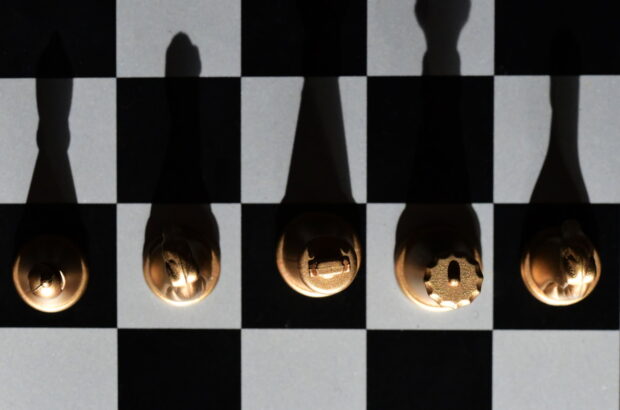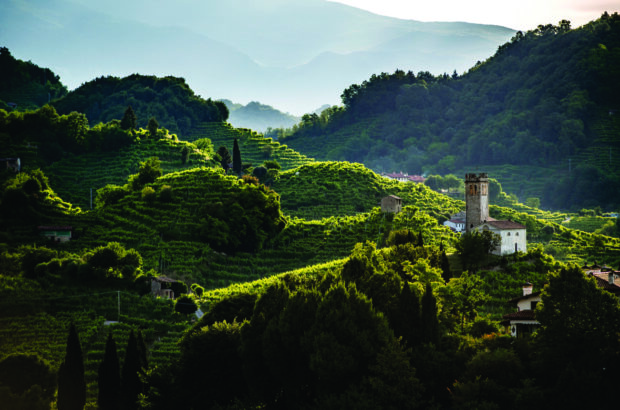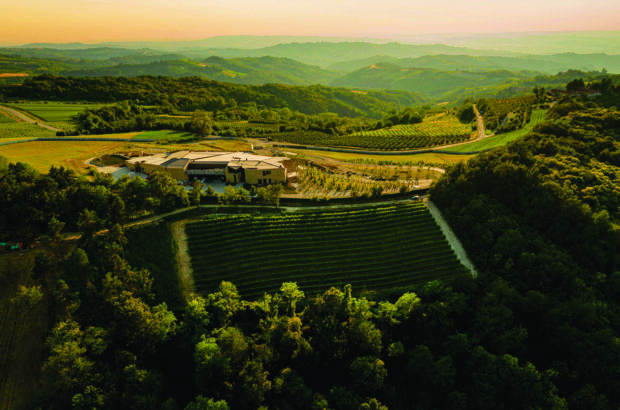It’s a bugger of a place to make wine,’ says Hunter pioneer Max Lake with typical Aussie candour, smashing the common belief that as long as the sun shines, making wine is child’s play.
He’s right. With only one good vintage in three, this breathtakingly beautiful piece of New South Wales is a real challenge to even the most experienced winemaker. But there’s good news too. The prize for those who succeed is an exceptional bottle of wine. ‘At its best, there’s nothing like a Hunter wine anywhere else in the world,’ says Hunter legend Len Evans.
To complicate matters further, recent climatic changes have made life more difficult. ‘Over the past three years the degree days are way down and the rainfall has been in the spring and not the autumn,’ confirms Glenguin’s winemaker Robin Tedder MW.
So, you may ask, if the place is so difficult why are so many persevering? The answer’s simple. Not only do the Aussies love a good challenge, they also know that their ripe, crisp Shiraz, dense, juicy Cabernets, exotic Semillons and blockbuster Chardonnays, are once again setting the world alight.
‘Us Aussies don’t look for problems, we just get on with the job,’ smiles Lake.
Australian Vintage Guide
The Hunter Valley
The Hunter is divided into the Lower and Upper Valleys and is conveniently located just three hours drive from Sydney, and the vineyards are the sixth most popular tourist attraction in Australia. Never slow to seize a business opportunity, the Hunter wineries are building custom-made visitor centres, complete with exhibitions and tasting galleries.
The big names of Rosemount, Tyrell’s, McWilliams and Rothbury still dominate, but there’s a new breed of winemaker on the scene – the Pitt Street Farmers. Pitt Street is Sydney’s downtown financial district and, you’ve guessed it, the ‘farmers’ are successful lawyers, accountants and doctors who are trying their hand at winemaking. ‘They see only the dollar signs and not the difficulties of the Hunter,’ comments Meerea Park’s winemaker, Rhys Ether. At first glance it all looks easy, but the myriad microclimates and the ever changing ‘sand to volcanic’ soils have fooled many prospectors who come looking for Hunter gold. ‘It’s all about site selection,’ says Rothbury’s winemaker, Alan Harris. ‘You’ve got to know where to plant. Some just come and plant anywhere and ironically discover their mistakes via their bank account.’
The ‘old boys’ know the Hunter’s secrets, of course. ‘Our founder, Samuel McWilliam, established our vineyards in 1877, and one of our best sites was planted in the 1880s,’ notes McWilliams winemaker Phil Ryan. ‘The original, 120-year old vines are still giving fantastic powerful and tannic wines.’
It is widely accepted that Shiraz, Semillon and the Hunter is a marriage made in heaven, but Max Lake at his famous Lake’s Folly vineyard disagrees. ‘It’s Cabernet Sauvignon for me. I planted it in 1963 and have no regrets,’ he exclaims. Big Rhys Ether argues against this: ‘Why plant Cabernet in the Hunter when it’s made for Shiraz?’ And Glenguin’s Tedder agrees: ‘Cabernet loses its character here as the Hunter imposes her own.’ Merlot is coming up fast and is a particular favourite of Margan’s winemaker Andrew Margan. ‘This classic has a real future in the Hunter because of its inherent softness,’ he says.
Arguments also surface when it comes to the whites. Although it is well established that Semillon performs best, Chardonnay is widely planted to give big wines that respond well to oak maturation. Margan again rings the changes by showing confidence in the little seen Verdelho. ‘Its lifted, perfumed tropical fruits and rich palate are perfect with our spicy foods,’ he explains. Harris agrees: ‘Verdelho is always the empty bottle at the end of a tasting.’
Vineyards
Irrigation is allowed in the Hunter and many vineyards have built their own dams but, as always, the Hunter has her own ideas. ‘When it comes to yields the Lower Hunter is mean,’ confirms Andrew Margan. ‘All my vines are on red volcanic soil. I pick my reds at 0.4 tonnes per hectare (ha), my whites at 0.8 tonnes/ha. That’s what the vines yield, no more, no less.’ Alan Harris looks across the guyot-trained vineyards to Rothbury’s half-full dam. ‘The joke is that when the dam’s full you don’t need the water and when it’s empty you do,’ he laughs. In the Upper Hunter, the Hunter river gives the vines more vigour and higher yields are possible. Up to 2–2.5 tonnes/ha confirms Harris.
The word ‘terroir’ was not in the Hunter vocabulary a few years ago, but now it is the key to a cunning marketing strategy used by many winemakers to pull rank over their neighbours. Listening to one Lower Hunter vineyard owner pronouncing proudly: ‘the aspect, soil and microclimate of my best block makes it far superior to my neighbours,’ I thought for a second I was in Bordeaux. Many Hunter labels now give the vineyard as well as the grape. ‘Our Brockenwood plot gives us consistent fruit,’ boasts Harris. And Tedder wants to classify the River Terrace and River Oaks vineyards: ‘to establish an identity for these exceptional wines’.
Hunter wine
In recent years, a new style of wine has emerged. These ‘new’ wines still have the typical Hunter richness and balancing crisp acidity but the fruit is less ‘in yer face’ and this, linked to a greater control of oak, is producing wines with a definite European edge. French oak is replacing the more obvious American barrels and, typically, Tyrell’s winemaker Bruce Tyrell continues to experiment. ‘To provide a better balance we are reducing the maturation time, but are also using larger 500 litre barrels to reduce the oak impact,’ he explains.
Blockbuster ‘show’ wines still play an important part in the Hunter albeit, it seems, on a smaller scale. The traditional Hunter wines continue to produce tasting notes such as ‘weighty fruit, softer tannins and crisp acidity,’ but it’s the acidity that always surprises your taste buds. Stretching a point, it could be said that a fourth style is now emerging: ‘designer’ wines.
Andrew Margan is a leading exponent, explaining that potential customers ‘know exactly what they want, and that’s immediate appeasement’. To meet this increasing demand, he is making easy drinking, approachable wines – the Merlot is typical, with its soft, plummy sweet fruit balanced with a touch of oak. This ‘touch’ is six weeks in 225 litre American oak barrels.
Although the Hunter offers styles to satisfy every taste, many consumers still group the wines under one ‘drink me quick’ hat. With UK statistics showing that over 90% of Australian wine is drunk within 24 hours of purchase, it doesn’t need a genius to see that to be taken a little more seriously, Oz wine needs a vintage portfolio and a marketing push to tell consumers to hold on.
Thankfully, some winemakers are taking steps to prevent this premature consumption. Tyrell’s, for example, has a well-established ‘future’s scheme’. And at Meerea Park, owner Rhys Ether keeps half and releases half of his premium Alexandra Munro reds ‘to ensure that the discerning consumer drinks the wine at its peak’. It’s good to see that aged Semillon, surely one of the world’s finest wines, and long the sole bottle on the vintage Hunter shelf, will have company in the future.
The Hunter’s back and going from strength to strength. Why? Strewth man, there’s a new pride in the Valley.












